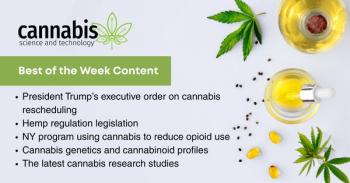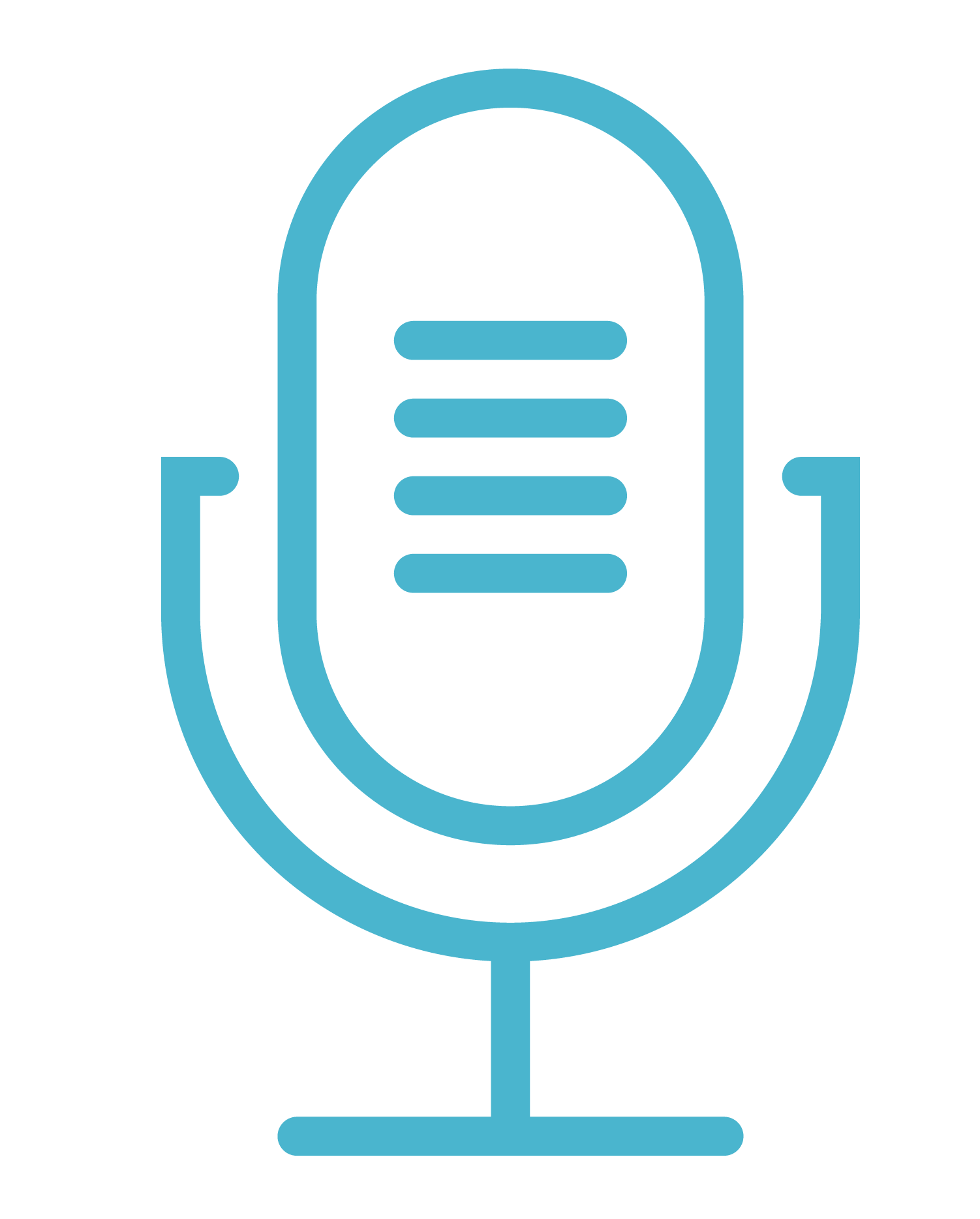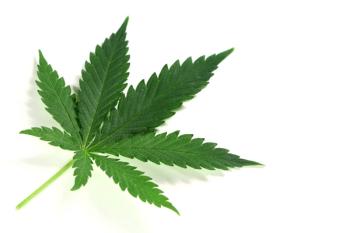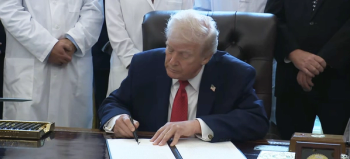
Empowerment Through Education, Part I: An Introduction to the Founders of Cannabis Patients Pacific Northwest

Join us in this multipart interview series as we go in-depth into the accomplishments and goals of the non-profit, Cannabis Patients Pacific Northwest.
In Part I, we meet founders Jeremy Robbins and David Benedicktus and hear more about how cannabis entered their lives and their journeys that led to the formation of their health education organization,
Watch the whole series!
Read a transcription of the interview below.
Madeline Colli: Hi, I'm Madeline Colli, the Editor of Cannabis Science and Technology and Cannabis Patient Care magazines. Today, I'm joined by David Benedicktus and Jeremy Robbins, co-founders of Cannabis Patients Pacific Northwest (CPPNW), a not-for-profit organization that provides cannabis education to the masses on a variety of topics such as medical use of cannabis, and the law surrounding cannabis. Thanks so much for joining me today, Jeremy and David.
David Benedicktus: Thank you. Thanks for having us.
Colli: Jeremy, if you could tell me a little bit about your background? How did the both of you also become interested in cannabis?
Jeremy Robbins: I grew up in California and I was pretty much like what you would consider to be the All-American kid. I was involved really heavily in swimming and water polo and triathlons. Those were kind of my things. I was a foreign exchange student in the Netherlands when I was 16, my junior year of high school. I then got into college at the University of California at Santa Barbara. I won an ROTC scholarship and army scholarship when I was there. I then decided I didn't want to do that and moved to the Pacific Northwest, to Portland, Oregon. I then got really heavily into bikes and bike mechanics. That was my thing for a minute, and was also going to community college.
On October 3, 1999, I had a pretty big bike accident and I broke my neck. When I did that, I broke three vertebrae in my neck. I broke at the cervical level the five, six, and seven vertebrae. What happened is, I took a header off of a retaining wall and when I did that, my body landed in the street, my head ended up on the sidewalk and that curb is actually what broke my neck. From that moment on, I knew that I was going to be paralyzed for the rest of my life and I just had to learn to adapt to that. So, it took about a year and a half for me to go through rehabilitation. I spent about two months in the hospital, doing pretty intensive rehabilitation and then I did outpatient rehab. I got to a point where I decided lifeneeded to go on and so I re-enrolled at the community college. I got to a point where my disability and accessibility became an issue, so I started doing the Americans with Disabilities Act (ADA) work at that point in time with the community college trying to, you know, be able to get into bathrooms because lo behold people with disabilities, they need to go to the bathroom too. I transferred to a pretty small, private Catholic school. I was able to go to school there on scholarship, and I got a degree in religious studies and philosophy. What I focused on was how in the world's religions, people with disabilities have been portrayed since the beginning of recorded history.
I then became involved in Chaplain work and so I actually went back to the hospital where I did my rehabilitation and started doing spiritual care. The big thing the spiritual care is, you know, a lot of people die. And I really wasn't very well prepared to deal with people dying. I really wanted to deal with people that had become disabled and were still living. And so, I realized I needed to figure out a different path. I found a master's program at Portland State University and rehabilitation counseling, and I enrolled in that, and that program really focused on lots of different sorts of disabilities, how to identify and work with people with those disabilities. The ultimate goal of vocational rehabilitation is to get people with disabilities jobs. I realized pretty early on that jobs are great, but people still have a high quality of life, doing other things. I really focused on how to counsel people with disabilities that are just trying to figure out what they want to do with the rest of their lives. Part of that may be getting a job and/or part of that might just be figuring out what makes them happy. That was that was kind of what led me to Cannabis Patients Pacific Northwest (CPPNW).
As a part of this injury in this accident, the medical model is that if you have something goes on and you have all these symptoms, we're just going to treat it and we're going to treat it with pharmaceutical drugs. And so when I exited the hospital after my inpatient stay, I was taking, like 15 different kinds of pills, three times a day, so about 50 pills a day and I just couldn't function like that. My brain is in a fog. It really messed up my body. Digestion was a real big issue. I just I wasn't happy. So, I started looking at alternatives and lo and behold, here in the state of Oregon, they had a very fledgling medical marijuana program, and it was 2002 that I asked my physician for a recommendation which he gave me, but I was too afraid to turn it in. I went in an entire year pretty much being a patient without being registered with the state. So, in 2003, which was a long time ago, now I became a fully-fledged registered medical marijuana patient in the state of Oregon, and I've had a card ever since then. In fact, I had a card in California for a little while and I have also had cards here in Washington State.
So I really became interested in medical cannabis because I wanted to get off of pills. I was able to replace pretty much everything with cannabis except for a bladder spasm pill and a blood thinner. And that was a big deal. You know, 45 pills a day is a pretty, pretty decent diet. What I then realized though is that finding, at least at that point in time, this again was 2003, so finding medical cannabis was really challenging and I had to learn how to cultivate it for myself. That required that I partner with somebody that had the space to build a grow room and then we spent a few thousand dollars outfitting it. At that point in time, you couldn't, get seeds or clones or anything like that, so we ended up having a friend of mine bring seeds back from Canada. We started cultivating at that point in time, and I was with that particular grower for five years and then I started growing with another friend of mine who is also in a wheelchair.
So this is a very unique thing: guys in wheelchairs, growing cannabis. It's a lot of work. That's the big thing. The other the other thing is, we had to really figure out creative ways to get into the spaces that we needed to get into, how to move plants around, and deal with plant numbers. Unfortunately, you know, plant counts have always been pretty low and so you had to you had to grow big plants that were that were tough to move around. Anyway, this this was kind of where it all started and I have been fairly successful in producing medicine for myself and now for a lot of other folks. That's kind of what ended up happening is along the way; I networked and met other people, and the majority of them A) could not find cannabis, B) could not find consistent cannabis, and C) couldn't find cannabis that was gonna work for them.
The roles that I occupied changed, I was a patient at first and then I became a grower and then I became a caregiver. So, in each of those roles, I've done different things. But it's been incredibly rewarding and I have actually been able to use the things that I was taught in school with my master's degree and my bachelor's in religious studies and philosophy, in helping people figure outhow they can also get off of pharmaceuticals and use alternative meds. At this point, we've expanded beyond just cannabis, so it's really exciting to think about what the future holds. I'm gonna let David talk about his experience now.
Benedicktus: That's a great summary, Jeremy. I've learned some new things and I've known you for a few years and I just learned about the ROTC thing. So, I was going to high school in Los Angeles in 1967 and there was a lot of cannabis around from Mexico in from and some coming back from the guys who went to Vietnam or in Europe. I was a good high school student and then in my senior year, some of it was available, so I tried to once or twice and I ended up writing my Advanced Placement class in Contemporary World Problems on cannabis. I gave a presentation in my high school class on it, because it was all about prohibition and, well, there wasn't a lot of information about it, so, I just talked about what was in the press about it. It was mostly the propaganda and the information that came out of the drug wars. It was all about the prohibition side, but I thought it was kind of cool that I was able to talk about that, and my instructor was okay with it.
But then I went to Los Angeles Community College and I had an unfortunately a low draft number at the same time I had to take an economics class because when you're a freshman, you have to take whatever's available. Sometimes you don't get it, and I hated economics. I lost my 2-S deferment and I was drafted for the Vietnam War. Then my stepmother at the time knew about a program in the Navy, and I applied for it, and I met the criteria to enlist in the Navy. I became a medical corpsman at San Diego and I applied for what they call a “secondary school specialty” and I was interested in psychology, so I went through that six month training become a psychiatric technician. I worked with all the Marines and Navy personnel at Oakland Naval Hospital with a psychiatric unit who came back who were psychiatrically disabled and at that time, most of them were suffering from something called Post Traumatic Stress Disorder (PTSD), but we didn't know. I think 1982 is when they finally created that diagnosis. I was in the Navy stationed in Oakland Naval Hospital from 1968 to 1972 and then I worked a little bit as a psychiatric technician at the University of San Francisco Crisis Unit and thought the psychology stuff was kind of interesting. Before I went to college, we did a little walk about, about three months of camping and backpacking. We ended up–my wife and I at the time, we were married at 21 years old because with the war that was going on and we thought “What the heck”–so, we ended up moving to Denver, Colorado. I used my GI Bill to go to the University of Colorado School of Nursing at the Medical Center in Denver. I graduated with a Bachelor of Science in Nursing in 1979 and I worked in mental health in inpatient and outpatient psychiatry until the recession hit and then I got a job at the Oregon House. We moved back to the west coast to Corvallis. It's just one of those serendipitous things: my wife's brother was living there and we went out to visit and then said, “Oh, this is Green Acres. This is beautiful.” We'll live in the Willamette Valley, which turned out to be the west coast of the Pacific Northwest and is a mecca for cannabis growing. It was all around us, but we had young kids and so we weren’t involved in recreational use and of course it was illegal back then, so you had to deal with surreptitiously.
I was working in the department of oncology at Oregon Health Sciences University in giving chemotherapy. I was mixing up chemotherapy and giving laminar flow events and giving blood products, pain management, nausea for the chemotherapy, and right next to all the medications were little joints from the Oregon Health Sciences University, as part of one of the first studies on preventing nausea from chemotherapy by smoking a joint. But the protocol was only after the person was already throwing up, not beforehand prophylactically. They would give people Marinol, which was a synthetic tetrahydrocannabinol (THC) beforehand, but they wouldn't give it to the cannabis marijuana cigarettes. So that was an interesting experience and I learned about Marinol. Most people didn't like the Marinol because it was too strong it was all synthetic THC, and it gave hallucinations making them feel uncomfortable. I found with cannabis that they had relaxation and more control over their nausea and they can dose it better. But few people used it because of the prohibition about it and all of the hyperbole and stuff that's been out there in the press.
After the recession and more jobs came back and support for mental health services, I worked in outpatient and inpatient mental health programs and clinically for about 20 years. Then I moved over to working for United Behavioral Health under United Healthcare and Blue Cross Blue Shield looking at best practice for chemical dependency and mental health treatment. I had the whole catchment of the western United States – 500,000 subscribers looking at all the programs and what medications we were prescribing and paying for. So, I got to see “how sausage was made” in the healthcare system and it wasn't very pretty. Especially a chemical dependency, it was like one size fits all and no one knew what they were doing. You might be mostly getting services from people who are recovering addicts, not from licensed professionals. It really graded on me. It was ethically challenging working in a “managed care” environment where we were focused on saving money rather than providing the best health care, which is the struggle for the profit system. I got my education there about the health care system and also along with the clinical experience I had, I realized the really powerful untoward side effects and adverse effects of a lot of the psychiatric medications, which were life-changing. You could take antidepressants, or one of the potent psychiatric medications, and it would change your brain structure forever, and you'd have to add on other medications in order to control the side effects and the adverse reactions. That was rather an unpleasant discovery and I shifted then from inpatient and best practice work in the insurance business to an opportunity to get a voluntary work with community mediation in my community. There was a job that opened up running the victim impact program for the juvenile court–using my mental health background experience–being a liaison between victims, who were juvenile offenders, the prosecuting attorney’s office, the court, and the probation counselor, and community resources.
Right about that time, 2001/2002, this incredible study started to surface that changed everything in psychiatry and mental health and chemical dependency. It was called the “Adverse Childhood Experience Study” by the Center for Disease Control and Kaiser Permanente that showed that toxic stress in childhood changes the brain structure. It sets people up to seek out medications or experiences that help them downregulate because the stress that people are exposed to in childhood, when their brains are really vulnerable and up until age 24 when you're fully formed, creates space called hypercortisolemia. That's a mouthful. Exposure to cortisol, the stress hormone in your system, marinated for more than 30 minutes changes the brain structures of key parts of the brain associated with regulation of emotion, memory, and ability to regulate your physiology. Tt was stunning research. Many of the chronic diseases that we were treating with these broad-spectrum arrays of pharmaceutical drugs could be reversed engineered through meditation, breathing practices, and judicious use of some medications. In 1999, other studies were coming out about how the two drugs that were being used for PTSD treatment, Zoloft and these SSRIs, were ghost written by the pharmaceutical companies, and they didn't include the information on how it increased agitation and suicidality in patients and also changed in some cases, your brain for the rest of your life after two weeks of use. It was just stunning stuff published in the New England Journal of Medicine, and the two authors that published it got fired within a year by the pharmaceutical companies. I thought, whoa, this is what I've been doing for years, and giving out hundreds, maybe thousands of doses of this. It was a very challenging thing to look at just how little we knew about the medications that we are giving to people and that only two were authorized for treatment of trauma and post-traumatic stress. And then in conjunction with the adverse childhood experience study, realizing that we needed to have other modalities available because those medications weren't working when people were using. We were prescribing other medications that weren't for anti-psychotic for that they had a really powerful adverse reactions or side effects that people didn't want to take.
I started teaching about all that and doing trainings when I was working for the juvenile court. We had a MacArthur Foundation grant that came in to talk about truancy and we use that to bring people together and talk about trauma and how to create trauma-informed care. Now that's the standard of care throughout the United States, throughout the world – trauma informed care, you probably see it everywhere. So that's looking at trauma differently, and that it causes all of these chronic diseases.
I retired when I was about 62, which is 22 years ago, and I started and I had a friend who was running a community education program at Clark College, and I’ve known her for many years. I said, “Hey, I'd like to teach some classes on all the things I learned about healthcare, and the and how sausage is made, maybe help people make better decisions, get access to care, and be able to advocate for themselves.” I'd also developed an interest in literature coming out about how to prevent cognitive decline as you age. Which was some “me-search in my research” and I wanted to be healthy as well. I spent four years teaching classes in the local community education program at Clark College on those kinds of topics, health and wellness. In that research, I came across people like Dean Ornish, from the University of San Francisco Spectrum Program that was doing this incredible program on reversing heart disease by changing lifestyle and through diet, no medications, completely open the occluded arteries after a year. He said, “and by the way, it's good for your brain to anything that opens your heart is opens the other vessels.” He had a list of what an anti-inflammatory diet and lifestyle was, and right in there was cannabis. I said “what?” So, I started researching that and I ran into the stuff from Gary Wenk at the Ohio State University about a puff or two a day keeps the plaque away and prevents cognitive decline and dementia and stuff like that. I mean, all this research was out there that was percolating up, just like the adverse childhood experiences was.
This was now 2013/2014/2015. I was doing the classes at Clark College and after four years of doing those classes, the program coordinator, Tracy Riley Kelly, says, “Why don't you put together a curriculum on cannabis, healthcare, and cannabis?” In Washington [state], we had just passed medical marijuana, recreational marijuana, this January 2017. And I said, “we can do that?” And she said, “Yeah, sure. Go ahead and do it.” So, I use this model which is to present the science, the evidence, and then bring people in from the community and talk about it who were experts. And lo and behold, in the Pacific Northwest, there's a lot of experts on cannabis around here and Jeremy was one of them, from all the work he’d done with patient advocacy. In my first there was 12 people in first class, and they were mostly older folks, who were from my generation who were starting to use cannabis for their aches, pains, arthritis, and different other chronic diseases and substituting that for pharmaceuticals. There was a botanist there, Carol Stiff, who has a master's in botany, and a PhD, and she said “You know, there's this guy named Tom Lahrman, and then there's this guy named Jeremy Rogers. You need to talk with him and bring him in your classes.” Well, lo and behold Tom Lahrman in San Diego, California started the patient movement down there and he moved up to city Northwest in the late 2000s. He was one of the first, back when we only had the medical program in Washington. He had a five-acre farm and much of the land dedicated to growing patient medication. Patients could sign up, he would draw it for him, and come and get it. In 2015, the NIOSH, the National Institute of Health Safety, did a study at his organic farm, just four miles north of Vancouver, Washington on repetitive usage for cannabis workers, because the federal government knew it was coming and that we'd have these large farms and also exposure to molds and pesticides. They had all these air quality things in his farm, and they were looking at what kind of clippers they use, and stuff like that. He was published nationally, and that was the model that they use for when they went into other farms and still do in a lot of ways. So, all of this rich resource was right here, and we did five years of classes at Clark College on cannabis. It was very well received. We'll get into that in a minute but, that was my cannabis journey. And then I am also a medical patient for my degenerative disc and backpacking injury that blew out my knee.
Newsletter
Unlock the latest breakthroughs in cannabis science—subscribe now to get expert insights, research, and industry updates delivered to your inbox.



